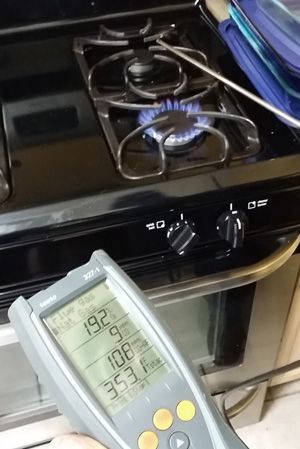The Importance of Having This Test
Carbon monoxide (CO) is a deadly, colorless, odorless, poisonous gas. It is produced by the incomplete burning of various fuels, including coal, wood, charcoal, oil, kerosene, propane, and natural gas. Products and equipment powered by internal combustion engines, such as portable generators, cars, lawn mowers, and power washers, also produce CO. In San Antonio, TX, homes often use fuel-burning appliances that can leak CO if not properly maintained. At LgO Services, we test for CO to help protect your home and family.
How Many People Are Unintentionally Poisoned by CO?
On average, about 170 people in the United States die every year from CO produced by non-automotive consumer products. These products include malfunctioning fuel-burning appliances such as furnaces, ranges, water heaters, and room heaters; engine-powered equipment such as portable generators; fireplaces; and charcoal that is burned in homes and other enclosed areas. In 2005 alone, CPSC staff is aware of at least 94 generator-related CO poisoning deaths. Forty-seven of these deaths were known to have occurred during power outages due to severe weather, including Hurricane Katrina. Still others die from CO produced by non-consumer products, such as cars left running in attached garages. The Centers for Disease Control and Prevention estimates that several thousand people go to hospital emergency rooms every year to be treated for CO poisoning.
What Are the Symptoms of CO Poisoning?
Because CO is odorless, colorless, and otherwise undetectable to the human senses, people may not know that they are being exposed. The initial symptoms of low to moderate CO poisoning are similar to the flu (but without the fever). They include:
- Headache, fatigue, shortness of breath, nausea, and dizziness
High-level CO poisoning results in progressively more severe symptoms, including
- Mental confusion, vomiting, loss of muscular coordination, loss of consciousness, and ultimately death
What We Provide
- Make sure appliances are installed and operated according to the manufacturer's instructions and local building codes. Most appliances should be installed by qualified professionals. Have the heating system professionally inspected and serviced annually to ensure proper operation. The inspector should also check chimneys and flues for blockages, corrosion, partial and complete disconnections, and loose connections.
- Never service fuel-burning appliances without proper knowledge, skill, and tools. Always refer to the owner’s manual when performing minor adjustments or servicing fuel-burning equipment.
- Never operate a portable generator or any other gasoline engine-powered tool either in or near an enclosed space such as a garage, house, or other building. Even with open doors and windows, these spaces can trap CO and allow it to quickly build to lethal levels.
- Install a CO alarm that meets the requirements of the current UL 2034 safety standard. A CO alarm can provide some added protection, but it is no substitute for proper use and upkeep of appliances that can produce CO. Install a CO alarm in the hallway near every separate sleeping area of the home. Make sure the alarm cannot be covered up by furniture or draperies.
- Never use portable fuel-burning camping equipment inside a home, garage, vehicle, or tent unless it is specifically designed for use in an enclosed space and provides instructions for safe use in an enclosed area.
Are CO Alarms Reliable?
CO alarms always have been and still are designed to alarm before potentially life-threatening levels of CO are reached.
How Should a Consumer Test a CO Alarm to Make Sure It Is Working?
Consumers should follow the manufacturer's instructions. Using a test button tests whether the circuitry is operating correctly, not the accuracy of the sensor. Alarms have a recommended replacement age, which can be obtained from the product literature or from the manufacturer.
How Should I Install a CO Alarm?
CO alarms should be installed according to the manufacturer's instructions. CPSC recommends that one CO alarm be installed in the hallway outside the bedrooms in each separate sleeping area of the home. Avoid locations that are near heating vents or that can be covered by furniture or draperies. CPSC does not recommend installing CO alarms in kitchens or above fuel-burning appliances.
What Should You Do When the CO Alarm Sounds?
Never ignore an alarming CO alarm! It is warning you of a potentially deadly hazard.
If the alarm signal sounds, do not try to find the source of the CO.
- Immediately move outside to fresh air.
- Call your emergency services, fire department, or 911.
- After calling 911, do a head count to check that all persons are accounted for. DO NOT reenter the premises until the emergency services responders have given you permission. You could lose consciousness and die if you go in the home.
If authorities allow you to return to your home, and your alarm reactivates within a 24-hour period, repeat steps 1, 2, and 3, and call a qualified appliance technician to investigate for sources of CO from all fuel-burning equipment and appliances and inspect for proper operation of this equipment. If problems are identified during this inspection, have the equipment serviced immediately.








